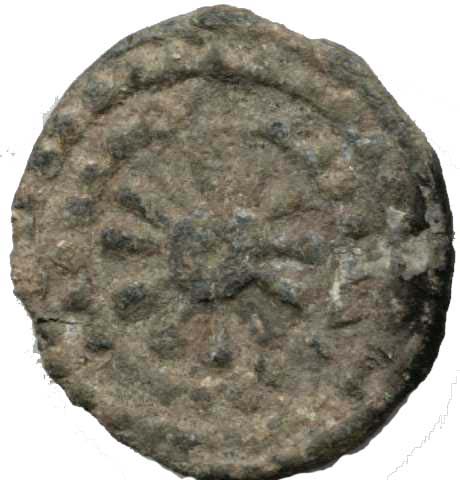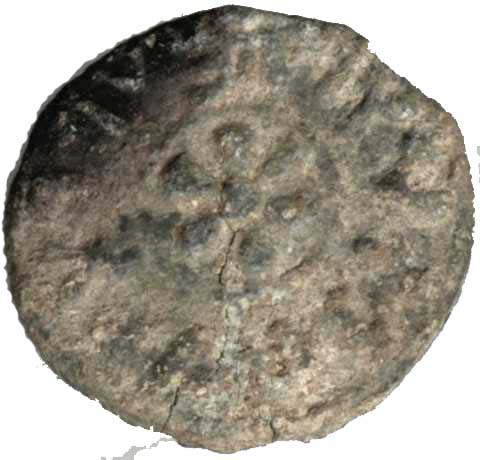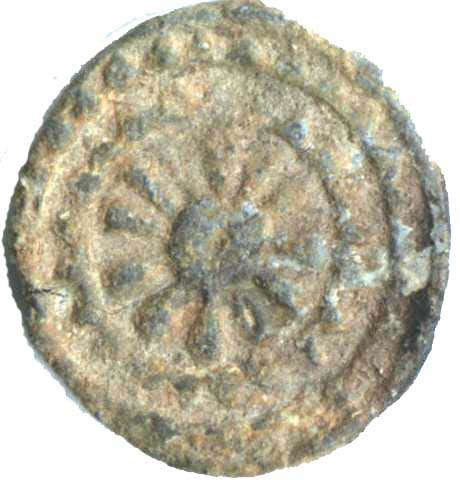| SPECIFICATIONS | ||
| Alloy | Lead | |
| Type | Cast | |
| Diameter | 19.3 mm | |
| Thickness | 1.8 mm | |
| Weight | 3.72 gms | |
| Shape | Circular | |
| Edge | plain | |
| DieAxis | O° | |


| Alloy | Lead | |
| Type | Cast | |
| Diameter | 19.3 mm | |
| Thickness | 1.8 mm | |
| Weight | 3.72 gms | |
| Shape | Circular | |
| Edge | plain | |
| DieAxis | O° |


|

| 
| |||||||||||||||||||
|

| 
| |||||||||||||||||||
My first attempt to read the 11 Brahmi characters from top towards left is gu ha pa ti li la ni ta ga ta ha which in Sinhala reads ( purchased for householder Lilani ). Please correct any errors.
In the 1999 catalog by Osmund Bopearachchi and Rajah Wickramasinhe titled Ruhuna. An Ancient Civilization Re-visited , these are listed as Inscribed Coins (A.1 - A.39). See for example coin A.26. The obverse of coin shown above is very similer to coin A.20. It was obtained directly from the same collector who provided most of the items for that book.
The discovery in Ruhuna of coin moulds used to cast these coins establishes that these inscribed Brahmi lead coins were cast in Ancient Lanka.
It is difficult to read the text off a scan even of 600 dpi. The illumination of the characters is critical to recognize them. One need to rotatate the coin and copy each character to paper. Many characters are clear and can be identified uniquely. The others there werea few possible choices. I selected them to make it read OK in modern Sinhala which is probably not what is needed. guha = house ; pati = owner. lilani sounds like a Sinhala name ; ta = for ; gataha = purchased. Experts would I am sure translate the legend differently. The last sequence occurs frequently in Ruhuna coins and are read in the catalog as gutaha and translated to "Of Guta".
If anyone can help me with reading the Brahmi Text properly please let me know. I will be putting a line drawing of the sequence of about dozen characters that are visible.
The coin was scanned at 600dpi and displayed at 300dpi. It was obtained in 2001 December from Mr A. Ratnayaka a collector in Katharagama, Lanka from the small collection he sent for display at the Sri Lanka Numismatic Society 25th Anniversary exhibition. I thank Ed Krivoniak for expertly cleaning this coin.